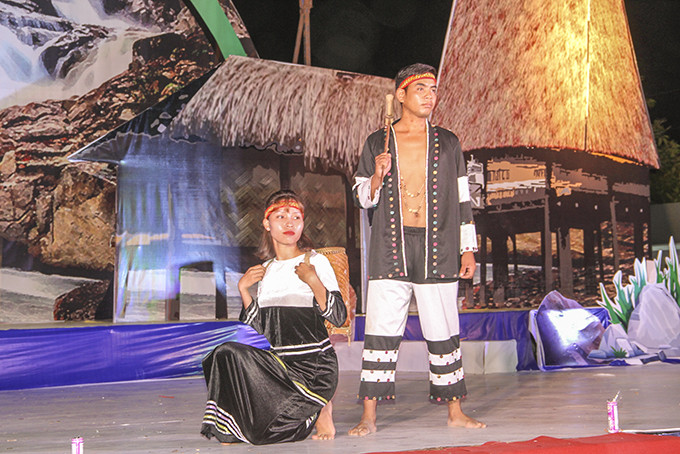
Khanh Hoa Provincial People's Committee recently promulgated a plan on preserving and promoting traditional costumes of the ethnic groups in the province.
Khanh Hoa Provincial People’s Committee recently promulgated a plan on preserving and promoting traditional costumes of the ethnic groups in the province.
For many years, it has been very difficult to trace the original costumes of the ethnic minorities who live in Khanh Hoa Province. A few dozen years ago, some researchers tried to study and carry out researches on the costumes of Raglai people. They has made many country-level and province-level researches; however, they haven’t achieved their desired results. It was very hard to imagine the styles, colors, and designs of the Raglai’s traditional costumes although there were some clues. At present, Raglai people are dressing according to their liking, not according to any traditional dress code, as said by Excellent Artisan Mau Quoc Tien.

|
These days, basically, Raglai women often wear long black skirts with blouses which are the same as Kinh people’s blouses. Meanwhile, Raglai men wear clothes like Kinh people. When participating in festivals, Raglai people dress in costumes which have an ancient feel. However, the costumes are also different among Raglai communities living in Khanh Son District, Khanh Vinh District, Cam Lam District, and Cam Ranh City. Raglai people in Khanh Hoa Province don’t know how to weave fabrics; therefore, they often buy fabrics from Kinh people or Cham people and Ê Đê people living in other provinces to make clothes.
Among Ê Đê people who live in Khanh Vinh District and Ninh Hoa Town, there are fewer and fewer people who can weave fabrics. Their casual clothes are the same as Cham people’s clothes. Many of them dress in a similar way with Ê Đê people in Dak Lak Province. For T’rin ethnic people, their clothes are similar to the clothes of Cham people. T’rin people also don’t weave fabrics to make clothes.
According to Khanh Hoa Provincial People’s Committee’s recent plan on preserving and promoting traditional costumes of the ethnic minorities in Khanh Hoa, from 2020 to 2026, the province will focus on making the list of cultural heritages on ethnic minorities’ traditional costumes in the province; building up a model of conservation and promotion of traditional costumes of Raglai people in Khanh Son and Khanh Vinh districts; encouraging ethnic minority pupils and students to wear their traditional costumes at schools; boosting introduction of ethnic minorities’ traditional costumes at cultural festivals, contests, and art shows; and documenting cultural heritages on handicraft related to ethnic minorities’ traditional costumes. Besides, the province will exhibit and sell traditional costumes of the ethnic minorities at tourist attractions over the province. The results achieved in the 2020-2025 period will pave the way for the 2026 – 2030 period.
Khanh Hoa Provincial People’s Committee directed the provincial Department of Culture and Sports to take charge of the plan and cooperate with relevant units to implementing the plan. The plan is due to start next year. The provincial education and training sector and local authorities will perform the important contents of the plan. Hopefully, the plan will be a push to promote the movement of wearing traditional costumes among ethnic minority people.
Giang Đinh
Translated by H.N






